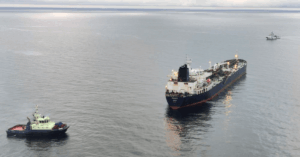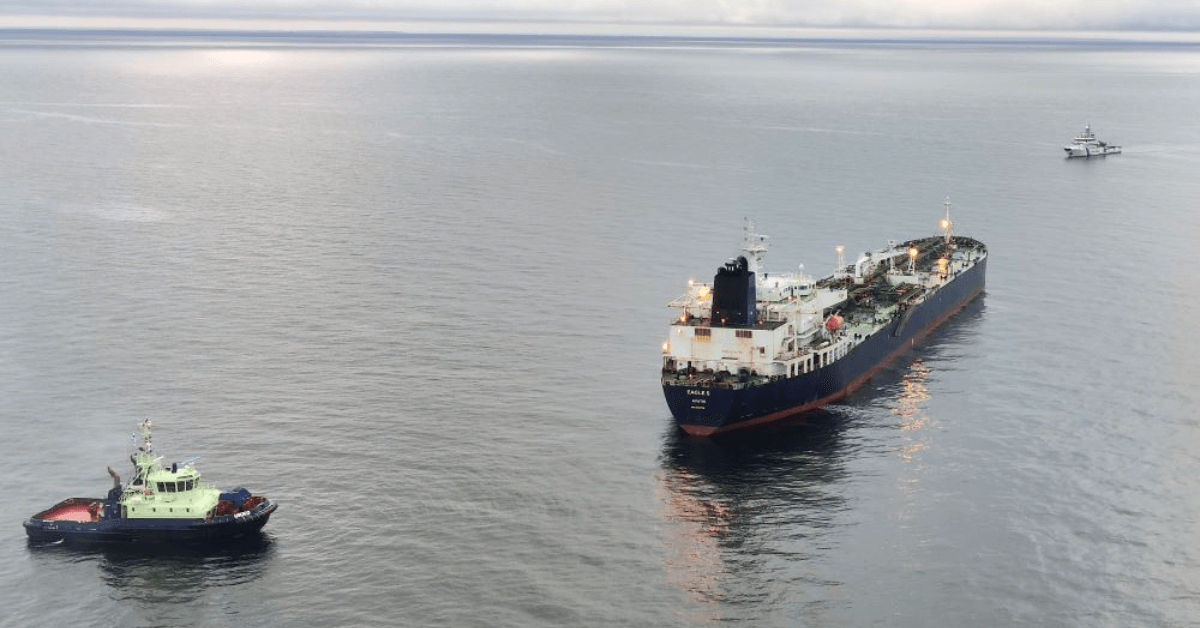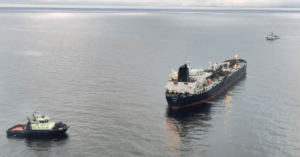
Adani Port Handles India’s Highest-Ever Monthly Dry Cargo Volume In May
June 13, 2025
Shipowners Warned To Avoid Red Sea & Strait of Hormuz Amid Israel-Iran Conflict
June 14, 2025

Finnish authorities have completed a criminal investigation into serious damage to undersea infrastructure in the Baltic Sea, caused by the oil tanker Eagle S, and are recommending prosecution of three senior crew members.
The suspects include the vessel’s master, chief mate, and second mate, all of whom were responsible for navigation and safety on board when the incident took place on December 25, 2024.
The Eagle S, registered in the Cook Islands and reportedly linked to Russia’s so-called “shadow fleet,” had been present in the area when a series of undersea cables, including one electric power line and four internet cables, were found damaged between Finland and Estonia.
Soon after, Finnish authorities detained the vessel and prevented the senior officers from leaving the country. They have been held in Finland since January 2025.
Investigators said the tanker’s anchor had dragged along the seafloor for more than 100 kilometers, or about 60 miles. The damage included destruction of the Estlink 2 undersea power cable and four telecommunications cables connecting Finland and Estonia. The anchor and its broken chain were later recovered by the Swedish navy in January.
The National Bureau of Investigation (NBI) confirmed that the criminal investigation is now complete. The head of the investigation, Detective Chief Inspector Sami Liimatainen, stated that the inquiry examined the responsibilities of the three officers and whether they should have noticed that the anchor had fallen and was dragging along the seabed. Evidence was collected from the vessel, the seabed, and through interviews with the crew.
Based on their findings, the NBI suspects the three officers of aggravated criminal mischief and aggravated interference with telecommunications under Finnish law. Both are considered serious offenses and could lead to prison sentences if prosecuted and convicted.
The suspects have denied deliberately damaging the cables, according to Finnish police. Despite their denials, Finnish media reported that preliminary trial dates may have already been set, with a trial possibly beginning in late August or early September.
The Finnish prosecutors’ office has now received the investigation file and will decide whether to officially press charges. While no decision has been made yet, the process is moving forward.
A lawyer representing Caravella LLC FZ, a UAE-based company that owns the Eagle S, declined to comment on the crew’s behalf, explaining that he does not represent the officers personally. However, the same lawyer had previously argued that the damage occurred outside Finland’s territorial waters, questioning whether Finland has the legal right to prosecute the case.
A similar case in Taiwan resulted in a three-year prison sentence for a Chinese captain whose vessel, registered in Togo, had drifted into a restricted area and damaged sensitive undersea cables. Authorities in Taiwan said the cables showed clear signs of external impact.
The situation in the Baltic has increased regional concerns over the safety of critical undersea infrastructure. Since 2022, when Sweden and Finland joined NATO after Russia’s invasion of Ukraine, there have been multiple cases of damaged cables and pipelines in the area. Analysts have warned that such acts may be part of hybrid warfare aimed at disrupting Western infrastructure.
In response, Baltic nations have increased patrols and monitoring of vulnerable undersea networks. NATO has also pledged support to protect these assets and strengthen maritime security in the region.
References: The Moscow Times, Reuters
Source: Maritime Shipping News


